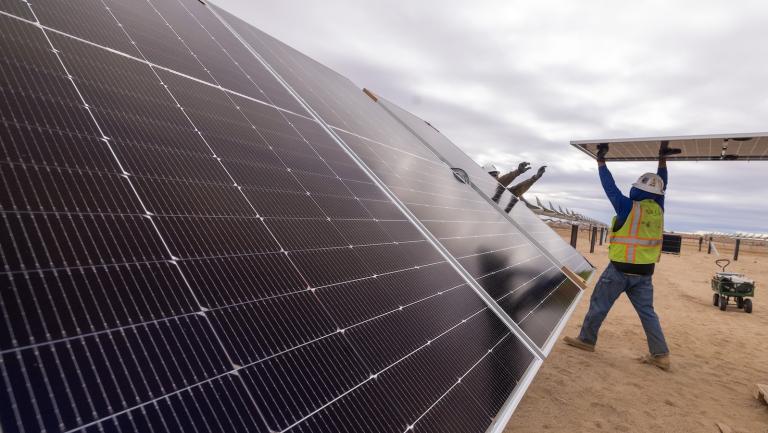On Tuesday morning, President Obama is expected to add details to a new program that will create jobs and cut needless energy consumption through home retrofits. This follows Obama’s request to Congress last week to create a new program to provide incentives to home owners who retrofit their homes to be more energy efficient. I am lucky enough to be able to attend the announcement, which is expected to take place at 11 a.m. at the Home Depot in Alexandria, VA.
The President has rightly identified retrofits as a way to put Americans to work saving Americans money. Not only are our homes so wildly inefficient that billions and billions of dollars in wasted energy are holding back our economic recovery, but fixing our leaky homes also has the potential to create countless high quality jobs that cannot be sent overseas. There are well over 100 million homes in this country and nearly all of them can slash their energy use with off the shelf technology. We will not be limited by the amount of work that needs to be done, but rather the amount of people out there to do the work.
There is no question that we should pursue home retrofits in a big way, but how we do it and how soon we can get started remain to be answered. The President will explain his thinking on the issue tomorrow and also solicit ideas from stakeholders.
Many of these stakeholders, including those from the environmental and efficiency community, labor, and industry, have coalesced around one structure. This has been commonly referred to Home Star, but also gets tagged as Cash for Caulkers. The idea is simple and an extension of the work done on the Retrofit for Energy and Environmental Performance program (REEP) that was in the House passed climate bill earlier in the year. The basic idea is to take this great structure and get it started early.
In a nutshell, Home Star would have two options: Silver and Gold. Both would be designed so that the more energy saved, the larger the incentive received by the homeowner. Silver would be simpler to implement and more prescriptive – do this (seal up your ducts, insulate your attic, etc) and get some cash. This would jumpstart the job creation and energy saving in a big way as soon as possible.
The Gold path would be a whole home performance model. Sophisticated contractors and raters would perform audits and determine what measures would save the most energy in the home. This is where the best jobs will be created and the most energy will be saved, because much larger savings are possible by considering the whole home as a system (e.g. being able to use a smaller AC or furnace because your home no longer leaks out conditioned air). All technologies that save energy can benefit from this program rather than just incentivizing one improvement. The Gold path would also be incredibly flexible from the consumer’s perspective. Basically, as long as the work gets done and the contractor plays by the rules, then you get the incentive.
Playing by the rules is a key point, because if the work is done badly, then no one wins. This is also incredibly important for creating good jobs, because it takes a real building science professional to know all about mechanical equipment, insulation, windows, and everything else in a home and to make sure the measures are installed correctly. This is why quality assurance is a cornerstone of the Home Star proposal that is crucial to making sure money stops leaking out of our homes every day.
Presidential attention to home retrofits and a program like Home Star is an incredibly positive sign that Congress will move to take advantage of our efficiency opportunity. It will be interesting to see when and how they act, but we will continue to try to push a performance based home retrofit program across the finish line.




